As the great saying goes – the future is now! With many smart home gadgets to make our lives easier, it’s an opportunity to make your home life easier with many different tools and items for a more efficient lifestyle. Whether that may be improving security, lighting control or even heating adjustments, there’s an array of things to choose from. In this guide, we’ll explain why smart home technology is worth the investment and what options are available.
Table of contents
- What is smart home technology?
- Why smart home technology matters
- Types of smart technology in the home
- What is the best smart home technology?
What is smart home technology?
Smart home technology refers to devices that allow you to control things in your home via remote control or on an automated system. The remote control could be via a phone or tablet via an application and can also be used to set automated processes in some cases.
How does smart home technology work?
Smart home technology works through a connected system – specifically, all devices involved in the smart home control must be connected to the router.
A connection can be via one of two ways – directly through an Ethernet cable or wirelessly.
Here’s a breakdown of some of the jargon you might come across when installing your smart devices:
| Jargon | Description |
| Wi-Fi (wi-fi or wireless) | A way to connect devices to the internet or help them work together without wires. |
| Bluetooth | A short-range connection that provides a way for data to be transferred between devices without wires. |
| Remote control | The ability to control a device from a distance through radio or infrared signals transmitted from the device. |
| Radio signals | A wireless connection that uses electromagnetic waves within the radio-frequency range for broadcasting, two-way communications, etc. |
| Infrared signals | A one-way type of wireless communication from devices and a top choice for remote control systems to enable smartphone or tablet control. |
| Router | A device that connects computer networks and sends information between those networks. |
| ‘Wake words’ (also known as ‘awake words’ or ‘trigger words’) | These are words or phrases used to ‘wake up’ the device through voice activation and give a command (e.g. ‘Alexa’, ‘Ok Google’ etc). |
Example of a router
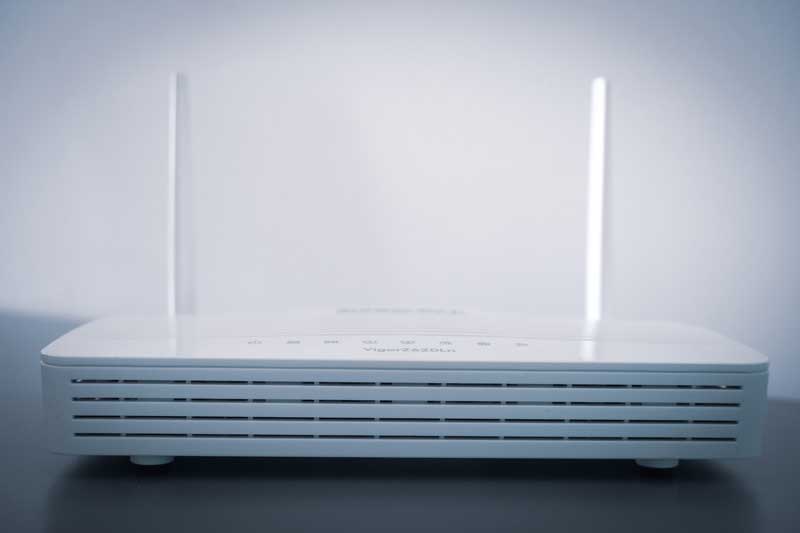
Why smart home technology matters
There is a multitude of reasons to bring smart technology into the home. With all smart devices connected to one system, this helps ease smaller daily stresses. Here are five ways smart home technology can help.
Simple control via the touch of a button or voice
Instead of having to move from your current space and make the journey to the main control point, you can use your tablet or phone to change the status of a system from where you are in the property.
All smart home technology in one system
With many different brands working together, connecting some of your products to one smart home technology system is optional. This saves you from having to scroll or search through many applications and instead find what you want to control in one sitting.
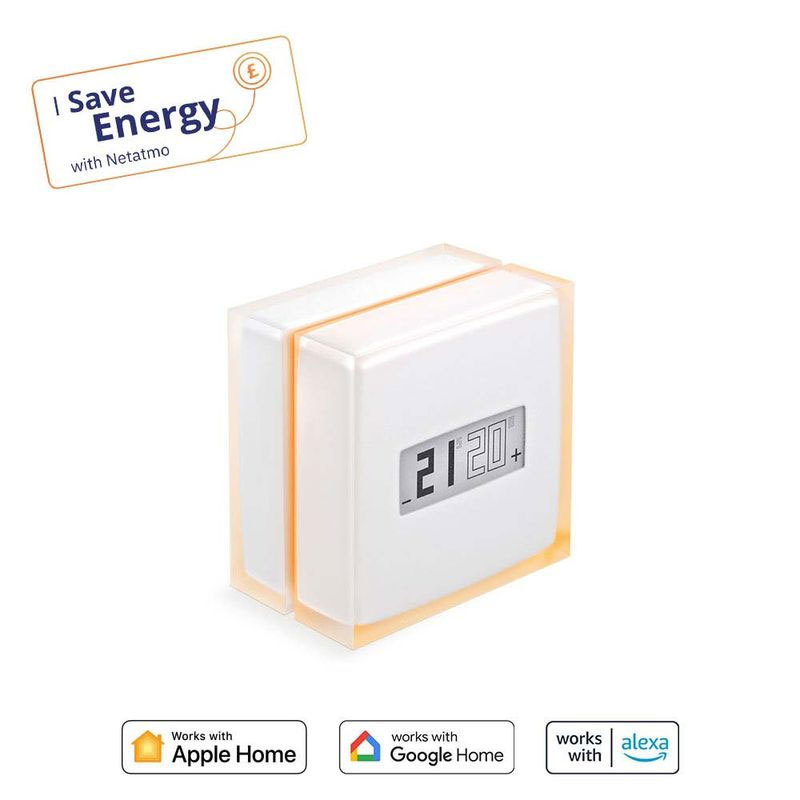
A safer and more secure property
We’re not just referring to cameras and audio on your doorbells to see outside. Safety also includes monitoring inside the home. This means having access to ensure you’re aware if there are any issues in parts of the house when home or away. This could be anything from smoke or fire to intruders or monitoring your children or pets for reassurance.
Energy-efficient technologies
We all like to save money and smart home technology is a great way to do so. Additionally, you can make your home more energy efficient thanks to the ability to schedule smart technology like heating, cooling and lights. This way can set exactly when you want your connected home appliances to work without worrying about wasting energy.
Home or away, you have control
Whether at work, on holiday or having a day out, you have control over your smart appliances. Options like scheduling when lights should turn off/on, checking whether the heating is adequate for your needs or even looking through cameras throughout the home are all at your fingertips as long as your device is connected to the internet.
Types of smart technology in the home
Smart home technologies aren’t limited, especially with the advancements nowadays. Lighting and thermostat control are two of the most common. However, other types of smart home technology are available:
- Smart doorbells
- Smart security cameras
- Smart smoke and carbon monoxide detectors
- Smart home rain sensors
This scratches the surface of what is available for your home. Below is a brief overview of smart elements that can make your home more efficient and even help save you money in the process.
Smart thermostats
A smart thermostat enables remote monitoring and control of your temperature and central heating using a smartphone or tablet.
Easy to use, they typically have a user-friendly interface and are not the same as smart meters. Their structure is of three parts:
- Part one: The plug – Plugged directly into your boiler.
- Part two: The thermostat and main control – This replaces the existing thermostat and connects to the first part via Wi-Fi.
- Part three: Personal smart device and app – You’ll likely receive a specific application to download. This is how you’ll control the thermostat remotely.
What’s the difference between a smart meter and a smart thermostat? Smart meters digitally send meter readings directly to your energy supplier. This ensures bills are more accurate. A smart meter cannot control the central heating.
There are also some smart thermostats that not only can be assigned schedules for low and high heating but also learn your routines and preferred temperatures. Further customising your thermostat options when the heating and hot water are in use.
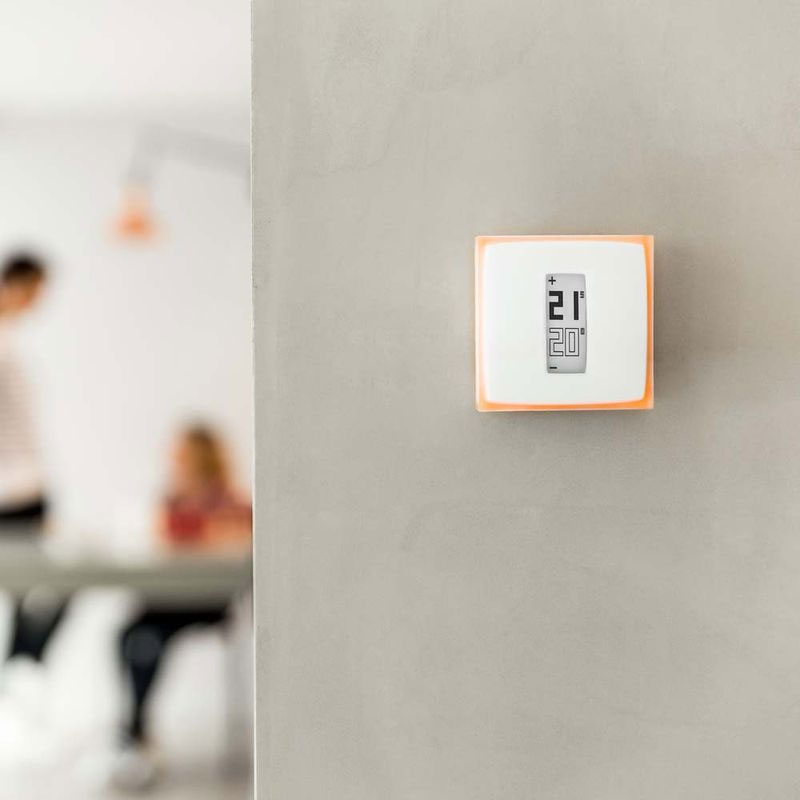
Smart lighting
Smart lighting is great if you want easy-to-control lights from anywhere in the home. In fact, because you control it remotely, you can ensure any lights left on turn off with just the touch of a button on your smartphone or tablet device. This helps make the lighting more energy efficient, helping you save on your energy bills.
Alongside energy saving, you can also adjust the lights to suit specific needs. Say, if you’re watching a movie or want to create the right atmosphere. Automation is also optional, meaning you can set the lights to turn on and off at certain times or get brighter or dimmer in specific time frames.
As a bonus, the remote-control lights allow you to control the lights to come on when away from the house (I.e. for holidays). Some smart lights can even use your phone’s location to identify this. As such, you can set the lights. So certain ones turn on when you return home.
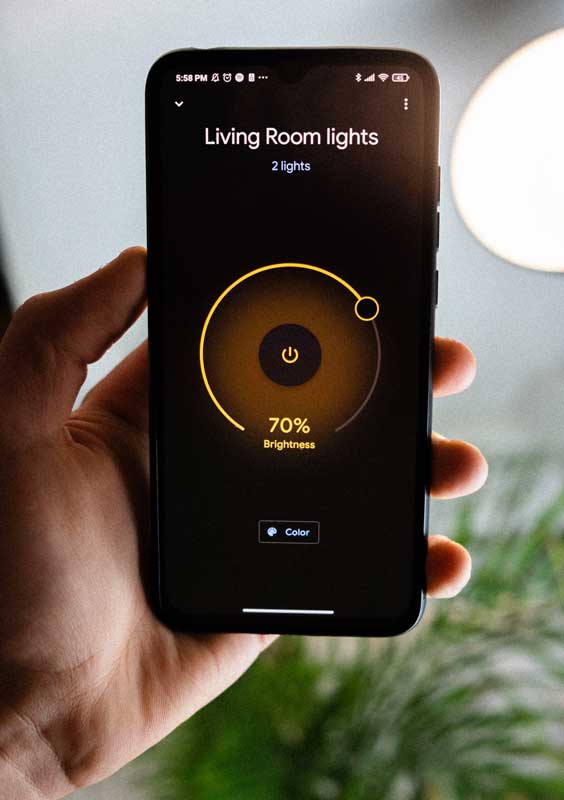
Smart home safety and security
The big two may be lighting and heating, but other means of smart home technology exist. Below is a brief overview of smart home devices that can enable more control over your technologies.
Before running off to make a purchase, make sure your chosen product has the features mentioned below. Not all products support these features. So thorough inspection of the product description will be required to ensure you get exactly what you want from your smart home devices.
Smart security cameras
A smart security camera is designed to monitor a home. It could be to keep an eye on your child or pet in another room to check they’re okay or even oversee the family or home when you’re away from the property.
With amazing advancements in these types of cameras, many models now have features to improve safety. This includes being able to record and store footage (either via a memory card to download to a PC or saved via cloud storage). Some smart cameras also have alarms to alert when loud noises or excessive movement occurs.
Better yet, some models can work with other smart home technologies. For example, the alarm can trigger if a motion sensor is triggered, a window or door opens, if your child is crying and more.
Some cameras also come with or without a light. So, if you’re walking up to the house at night, you have a light source automatically turned on to help you see. Alternatively, this can alert you if someone is walking outside the house because of the sensor.
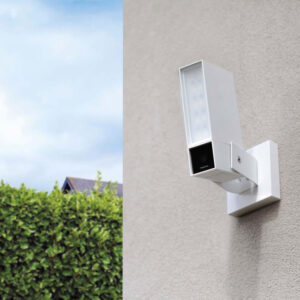
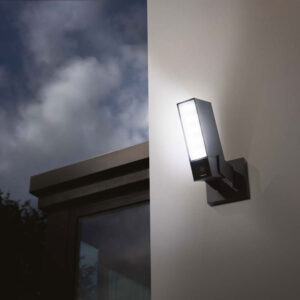
Smart smoke and carbon monoxide detectors
These alarms are considered essential for all homes or commercial buildings. Thanks to remote access, you have awareness if your alarm is triggered regardless of being away from the property. The remote control also means you can silence the alarm if you’ve accidentally set it off (e.g. burnt cooking such as toast).
Some smoke and carbon monoxide detectors also have speaking options. Meaning you can set a voice to tell you what the problem is. Coupled with the ability to connect with other smart home systems, you can have a comprehensive system that ensures your home is safer. For example, if the alarm is detected by a camera, the device can start to record when the alarm sounds. Another connection could be to the lights so that an exit can light up during an emergency or to warn even further.
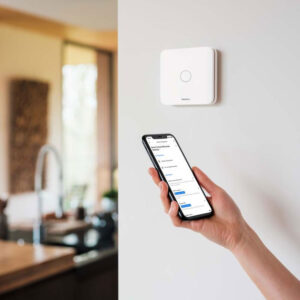
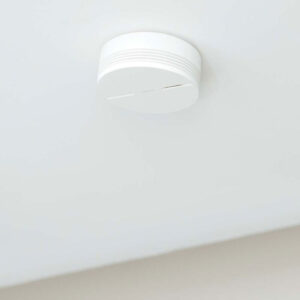
Smart doorbells
Smart doorbells are all the rage for home safety these days. So many models have at least one feature that enables you to see, hear or even speak to people at the door. Many have the potential to save recordings from the door for security purposes.
Some smart doorbells can be hardwired to your existing doorbell connections or have battery power for homes with or without an existing doorbell. This will then connect to the WIFI to allow you to confirm who is at the door through a speaker and/or camera.
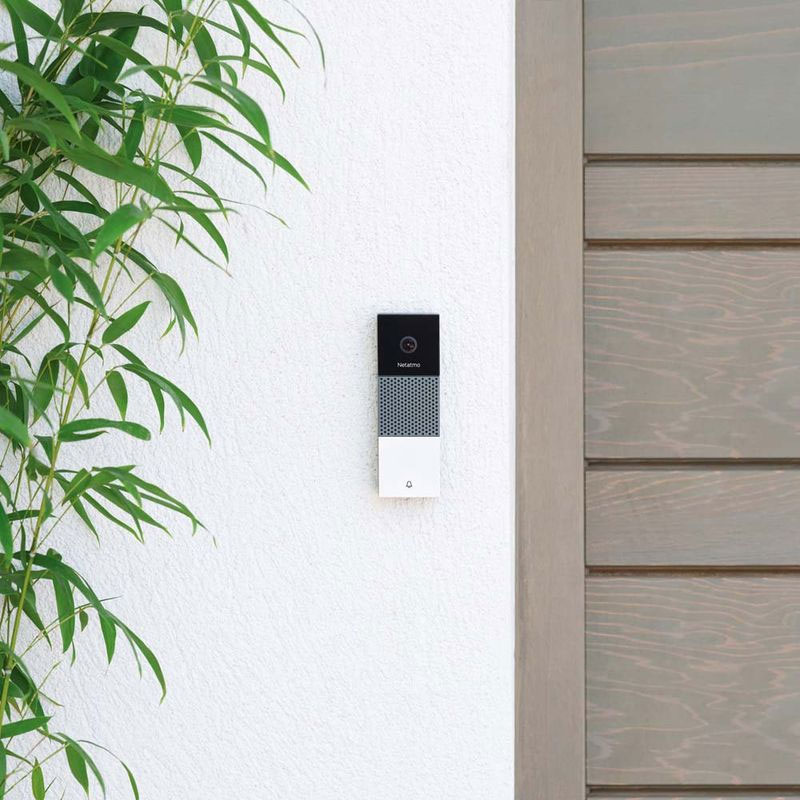
Smart rain sensors
These are handy devices designed to provide accurate rainfall readings in the local area. Very useful for everyday activities such as hanging washing on the line or leaving windows/roof lights open. It’s also a great way to determine whether you should leave the home if you have plans to take a trip out that day.
Notifications can be provided via smartphone or tablet when it rains, with some apps including a seven-day forecast, past readings and charts if you want more accurate weather warnings. Not all smart rain gauges require emptying either. So, you can monitor the weather without worrying about your device succumbing to the wet weather.
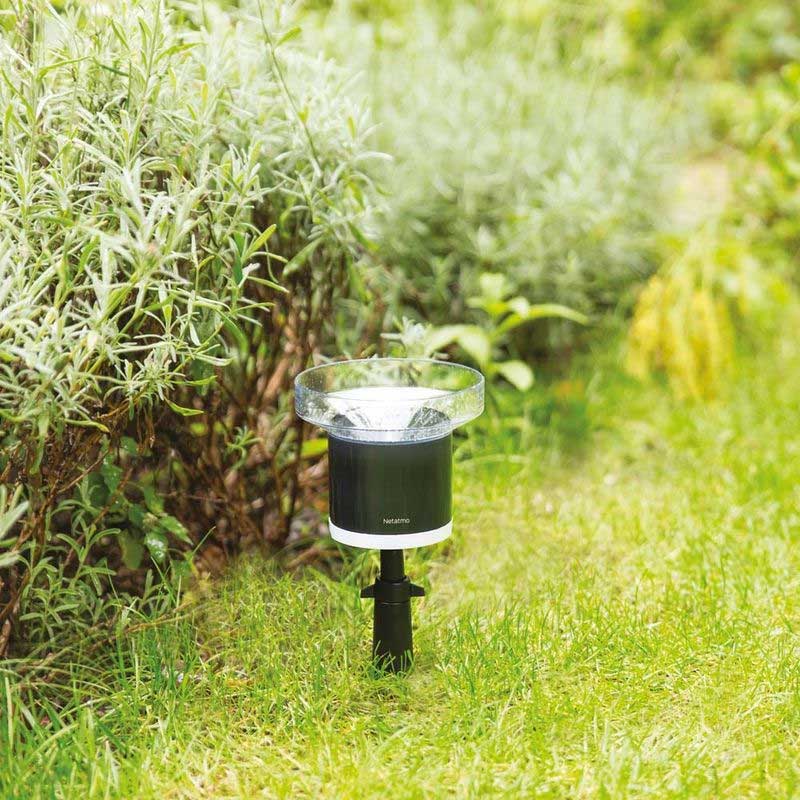
What is the best smart home technology?
Regarding the “best”, that’s down to what you value as important. Some questions to ask yourself are:
- Do you value energy efficiency?
- Is safety of high importance?
- Are you looking for ways to make controlling home systems easier?
Once you’ve figured out what is important to you, you can begin your search for valuable smart home systems. We provide a specially selected range of smart home devices from trusted brands to ensure you can make your home smart. This includes Honeywell Home and Netatmo. Two key members of the industry that ensure you have the smart gadgets you need for a more efficient, safer and securer home.
To conclude, there are various ways to make your home smart. Identify your needs, find what you need and get your home working to your ideal standard.
Looking for more ways to save on your energy bills? Check out our ten tips to save energy in your home. If you have any other questions or concerns, you can contact our friendly customer service team for advice on your purchase.










